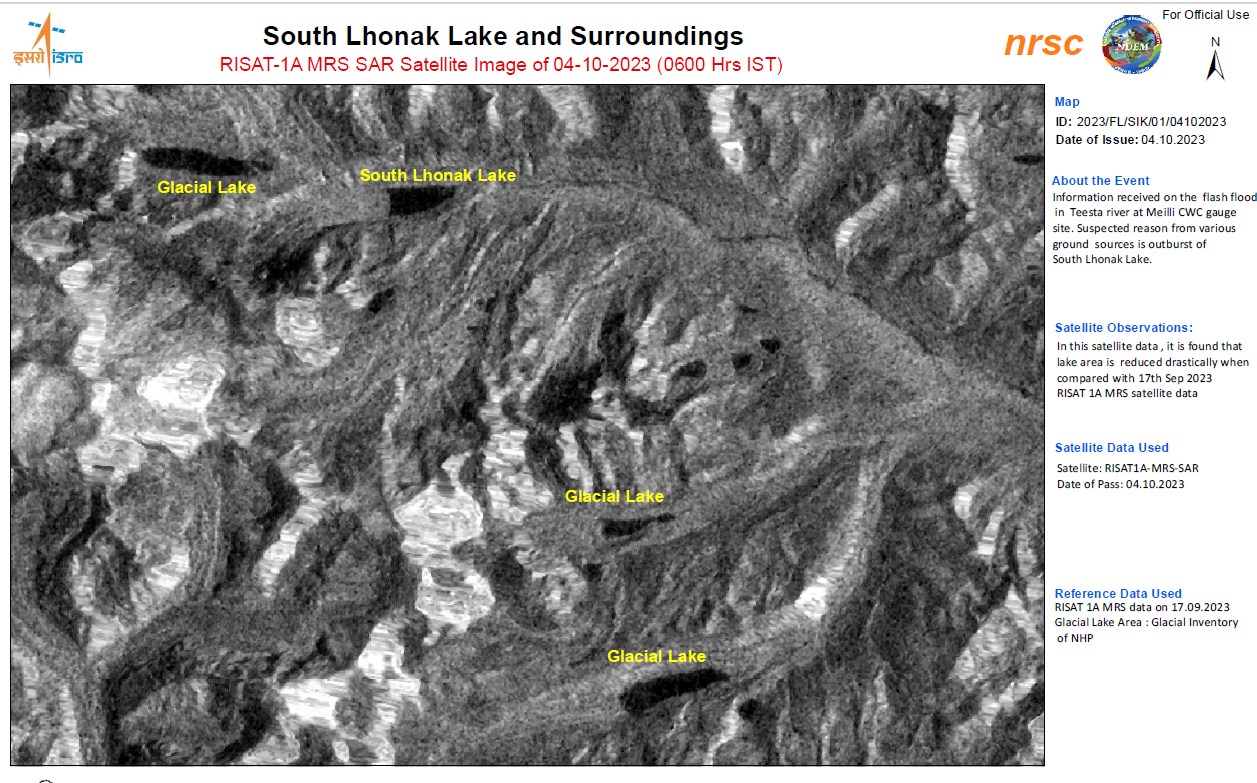The National Remote Sensing Centre (NRSC), a division of ISRO, has captured satellite images of the South Lhonak Lake in Sikkim. The images reveal a stark contrast between the lake’s state before and after the recent devastation in the region.
Below are the satellite images provided by NRSC/ISRO:

These images were captured following reports of a flash flood in the Teesta River at the Meilli CWC gauge site. Ground sources suggest that the likely cause of the flood was an outburst from South Lhonak Lake.
The satellite data reveals a significant reduction in the lake’s area compared to its state on September 17, 2023.

The Glacial Lake Outburst Flood (GLOF) from portions of Lhonak Lake in Mangan District caused a rapid rise in water levels with high velocities downstream along the Teesta River Basin during the early hours of October 4, 2023. The flood resulted in severe damage across the districts of Mangan, Gangtok, Pakyong, and Namchi.
The outburst in Lhonak Lake, North Sikkim, led to water surging at an estimated velocity of 15 meters per second, crossing the CWC Melli site with a measurement of 227 meters, which was about 3 meters above the danger level by 6:00 AM.
According to the Central Water Commission (CWC), the flood occurred around midnight on October 3, 2023. Flood forecasts for both India and Bangladesh were issued at 6:00 AM and 2:00 PM. Currently, the Teesta River is flowing below the warning level at the CWC Domohani FF Station, with a water level of 84.83 meters at 6:00 AM, expected to exceed the warning level within 6 hours.
In a statement, ISRO noted, “The lake has burst, and approximately 105 hectares of the area has drained out (based on comparisons between images from September 28, 2023, and October 4, 2023), which likely triggered a flash flood downstream.”
ISRO has confirmed that they will continue monitoring the lake using satellite data for ongoing surveillance.










Leave a Reply